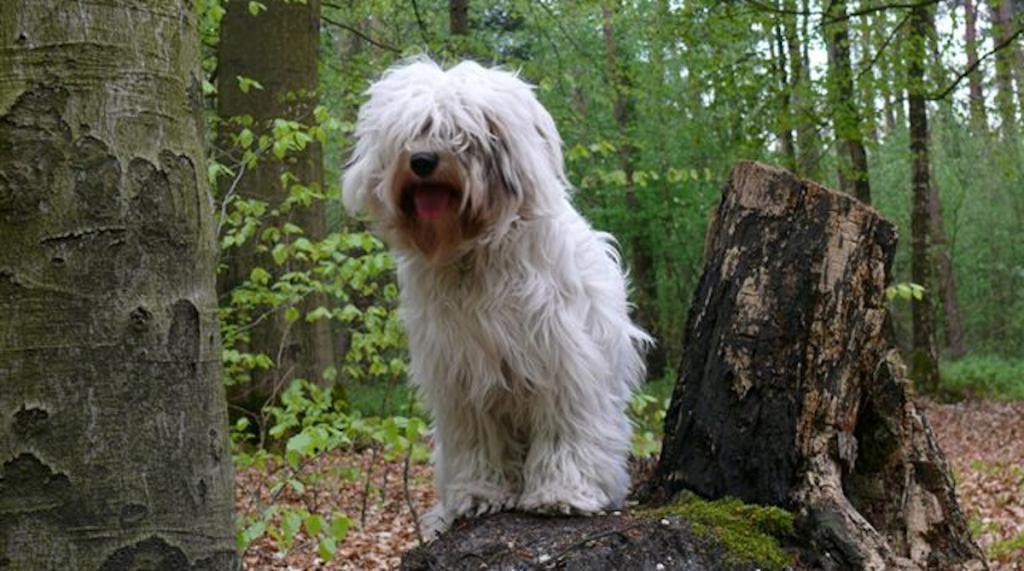As you scroll through your parchment of breeds in search of the perfect four-legged companion, the Tibetan Terrier stands out like a knight in shining armor amidst a court of commoners.
You’re intrigued by their shaggy yet noble appearance and wonder if their personality is as unique as their coat. With roots as ancient herding dogs on the high plateaus of Tibet, these ‘Holy Dogs of Tibet’ are not terriers at all. They’re a breed apart, combining a loyal guardian’s warmth with a mountain-born adventurer’s spirited nature.
As you consider welcoming a Tibetan Terrier into your life, you’ll want to fully understand what sets them apart, from their distinctive grooming needs to their surprising agility. What you uncover about their history may just tip the scales, but before you make that leap, consider the nuances of their temperament—could it be the perfect match for your lifestyle?
Stay tuned to discover how this enigmatic breed could fit into your world.
- Noise Level
- Energy
- Sociability
- Trainability
- Care
- Health
Overall
Summary
The Tibetan Terrier is a moderately energetic and sociable breed with a friendly disposition. They require moderate care and are generally healthy dogs, making them suitable companions for many households.
Tibetan Terrier: Traits, Temperament, and Care Guide
The Tibetan Terrier, an ancient herding breed, exhibits intelligence, loyalty, and a friendly demeanor, necessitating a care regimen that accommodates their exercise, grooming, and social needs.
Their exercise needs are moderate. Daily walks and play sessions ensure mental and physical well-being. High-quality dog food sustains their energy levels and supports overall health.
Their unique double coat requires regular grooming to prevent matting and maintain its insulative properties.
Training methods for Tibetan Terriers should leverage their intelligence with positive reinforcement, encouraging good behavior without instilling fear.
Be mindful of potential health issues in the breed, such as hip dysplasia. Regular veterinary check-ups will help you catch and address any concerns early, ensuring your Tibetan Terrier lives a long, healthy life as part of your family.
Exploring the Characteristics of the Tibetan Terrier
Building on the foundational care needs of Tibetan Terriers, let’s examine their distinctive characteristics, which meld their ancient heritage with their roles as companions and herders. Originating from the harsh climates of Tibet, these dogs were not bred as true terriers but rather as versatile animals capable of herding and companionship. As such, they display an intelligent, loyal, and affectionate temperament, often found in close association with their human families.
Here’s a detailed breakdown of their key traits:
| Trait | Description | Relevance |
|---|---|---|
| Coat | Unique double coat | Requires regular grooming |
| Temperament | Friendly, intelligent, loyal | Ideal loyal companion |
| Exercise Needs | Moderate | Suitable for active owners |
| Color Diversity | Comes in a variety of colors | Aesthetic choice for owners |
| Historical Origin | Bred near Tibetan monasteries | Reflects ancient breed |
They thrive on mental stimulation and social interaction, reinforcing their status as an integral part of your family.
Tibetan Terrier: A Comprehensive Profile and Guide
As you explore the Tibetan Terrier, understand that this breed exhibits a distinct squarish physique complemented by a dense, wooly coat designed for harsh climates.
Their paws, resembling snow shoes, provide exceptional traction, an adaptation to their origin in the mountainous regions of Tibet.
Adept at herding, these dogs possess intrinsic intelligence, making them highly trainable. Their loyalty cements them as vigilant companions.
Everything You Need to Know
Delving into the world of Tibetan Terriers provides prospective owners with a thorough understanding of this breed’s intricate history, distinctive temperament, and specific care requirements. As you seek to integrate one into your life, consider the following scientific and analytical details:
- Exercise: Adequate daily activity is crucial for their physical and mental well-being.
- Grooming: Regular grooming is necessary to maintain their thick, long coat.
- Health Conditions: Awareness of breed-specific issues is paramount. Common health conditions to be mindful of include:
- Progressive Retinal Atrophy (PRA)
- Lens Luxation
Understanding these aspects ensures you’re well-equipped to provide a nurturing environment. Tibetan Terriers are intelligent, adaptable companions, thriving in the warmth of a family that values their unique heritage and caters to their specific needs.

Discovering the Temperament
Exploring the temperament of the Tibetan Terrier reveals a breed characterized by its friendly and outgoing nature, intelligence, loyalty, and affectionate disposition. This breed is eager to please and responds exceptionally well to positive reinforcement during training. Tibetan Terriers are known to get along well with children and other pets, making them an integral part of the family unit.
Their alertness translates into a tendency to bark a lot, which, coupled with their loyalty, makes them effective watchdogs. However, this trait can be managed with proper training and socialization.
Embracing a Tibetan Terrier into your life means welcoming a companion whose temperament is synonymous with good luck, reflecting the breed’s historical status as a harbinger of fortune among Tibetan monks.
Tibetan Terrier: Is It a Good Fit for Families?
You may wonder if a Tibetan Terrier suits your family’s dynamic.
Consider their propensity for strong familial bonds and moderate exercise needs aligning with an active household lifestyle.
Additionally, evaluate their intelligence and trainability against your willingness to engage in consistent grooming and socialization efforts.
Assessing Tibetan Terrier’s Compatibility with Families and Kids
When considering a Tibetan Terrier for your household, their inherent friendliness and outgoing nature often make them compatible for families with children. Here are key points that detail their suitability:
- They form strong bonds and display loyalty, enhancing the sense of belonging in a family.
- Tibetan Terriers make excellent watchdogs. They tend to bark to alert their families of strangers or unusual activities.
- Their adaptability to training and ability to respond well to positive reinforcement makes them a joy to integrate into family life.
- Puppy training sessions can serve as a bonding experience and help establish guidelines for interaction with children.
- The breed’s minimal shedding is beneficial for maintaining a clean home environment, especially for families with allergy concerns.
Tibetan Terrier Adjustability Quirks
Understanding the adjustability quirks of Tibetan Terriers is crucial, as their independent nature necessitates dedicated training to establish a clear hierarchy within the household. As a breed, they may initially be wary around strangers and exhibit frequent barking. However, once acclimated and comfortable, they become amiable, loyal companions, deeply integrated into their family units.
Tibetan Terriers need regular grooming to manage their unique double coat; daily combing prevents mats and maintains skin health. It’s essential to mist their coat with water and conditioner before grooming to avoid damage.
These Terriers are susceptible to health issues, including progressive retinal atrophy, necessitating attentive care and regular veterinary check-ups. To prevent obesity, adhere to feeding guidelines and monitor treat intake.
Their intelligence makes them adept at canine sports, rewarding consistent, stimulating training.
Obedience Tips for Tibetan Terriers
When training your Tibetan Terrier, it’s essential to employ positive reinforcement; rewarding desired behaviors increases the likelihood of their recurrence.
Initiating socialization and structured training during their puppy phase can significantly enhance their responsiveness to obedience cues.
Ensure that each session is engaging and cognitively challenging to maintain their interest and facilitate learning.
Effective Training Strategies
To ensure your Tibetan Terrier thrives in obedience training, it’s essential to implement consistent, positive reinforcement techniques tailored to their intelligent and sensitive nature. It’s important to start training early to establish good habits and strengthen your bond. Ensure you practice daily, as consistency is key to their learning process. Engage in at least two short sessions daily to keep their attention sharp without overwhelming them.
| Training Phase | Strategy | Outcome Expected |
|---|---|---|
| Initial Learning | Short, engaging sessions | Build focus and trust |
| Skill Reinforcement | Consistent, daily practice | Strengthen obedience |
| Bonding | Positive reinforcement and rewards | Enhance connection |
| Grooming | Introduce to professional groomer early | Promote comfort with handling |
| Advanced Training | Gradual increase in complexity | Encourage cognitive development |

Exercise and Grooming Needs
Tibetan Terriers’ exercise regimen should consist of around an hour of physical activity daily, integrating walks, play, and interactive tasks to meet their moderate exercise requirements. This healthy breed thrives on a balance between physical exertion and mental engagement. As such, please don’t underestimate the importance of incorporating tasks that challenge their intellect and facilitate social interaction.
Your commitment to grooming is equally vital. A Tibetan Terrier’s double coat demands regular maintenance. Brush their fur at least two to three times weekly to prevent matting. Focus on areas where knots tend to form, and consider professional grooming services for optimal coat health. Specially formulated products may be necessary to preserve the integrity of their distinctive coat and ensure they remain comfortable and hygienic, requiring a lot of time and care.
Health Considerations
When considering a Tibetan Terrier’s health, be aware that they’re genetically predisposed to certain conditions, such as progressive retinal atrophy and hip dysplasia. These issues and potential lens luxation and neuronal ceroid lipofuscinosis can impact their overall quality of life and longevity.
Integrating regular health screenings and proactive care to mitigate these risks and ensure a longer, healthier lifespan for your companion is crucial.
Common Health Issues and Lifespan
When considering a Tibetan Terrier, you should know they’re susceptible to several hereditary health issues. These include progressive retinal atrophy and canine hip dysplasia, which necessitate vigilant veterinary care throughout their generally 12 to 15-year lifespan.
Notably, the degenerative condition known as Neuronal Ceroid Lipofuscinosis also affects this breed, requiring early diagnosis and management. Additionally, primary lens luxation, where the eye’s lens dislocates, is among the common health issues impacting their quality of life.
As a dedicated caretaker, you’ll find that regular health screenings and proactive care are crucial in mitigating these risks, ensuring your Tibetan Terrier enjoys a full, healthy lifespan as part of your family.
Is Tibetan Terrier the Right Dog for You?
Determining whether a Tibetan Terrier suits your lifestyle requires careful consideration of their exercise needs, grooming requirements, and social temperament. Tibetan Terriers, revered as lucky charms, are an ancient breed that may bring good fortune into your home. If you’re considering getting one, know that this dog thrives on human companionship and suits active individuals or families who can dedicate time to moderate daily exercise and mental engagement.
Their dense double coat, while hypoallergenic, demands regular grooming to prevent matting. Affectionate and adaptable, these dogs integrate well with children and other pets. Your commitment to their care will be rewarded with the loyalty and intelligence of a breed known for its amiable nature.
Alternatives for Tibetan Terrier: Loyal and Versatile Medium-Sized Breeds
Explore these breeds if you appreciate the Tibetan Terrier’s loyalty and versatility, perfect for those who value adaptable and devoted medium-sized dogs.
| Similar Dogs | Short Description |
|---|---|
| Soft-Coated Wheaten Terrier | Friendly and playful, great family pet. |
| Portuguese Water Dog | Swimming ability, hypoallergenic coat, versatile. |
| Bearded Collie | Long, flowing coat, friendly, active personality. |
| Polish Lowland Sheepdog | Known for its shaggy coat, intelligent, good-natured. |
| Schnoodle | A mix of Schnauzer and Poodle, intelligent and friendly. |
Conclusion
In conclusion, Tibetan Terriers, with their notable longevity—often living over 15 years—make for enduring companions.
It’s crucial to weigh their exercise and grooming demands against your lifestyle.
Meticulous in health monitoring and committed to positive training methods, you can foster a harmonious bond with this ancient breed.
Assess carefully; the Tibetan Terrier’s adaptability and affectionate nature could suit your family dynamic, offering a fulfilling experience for both owner and dog.
